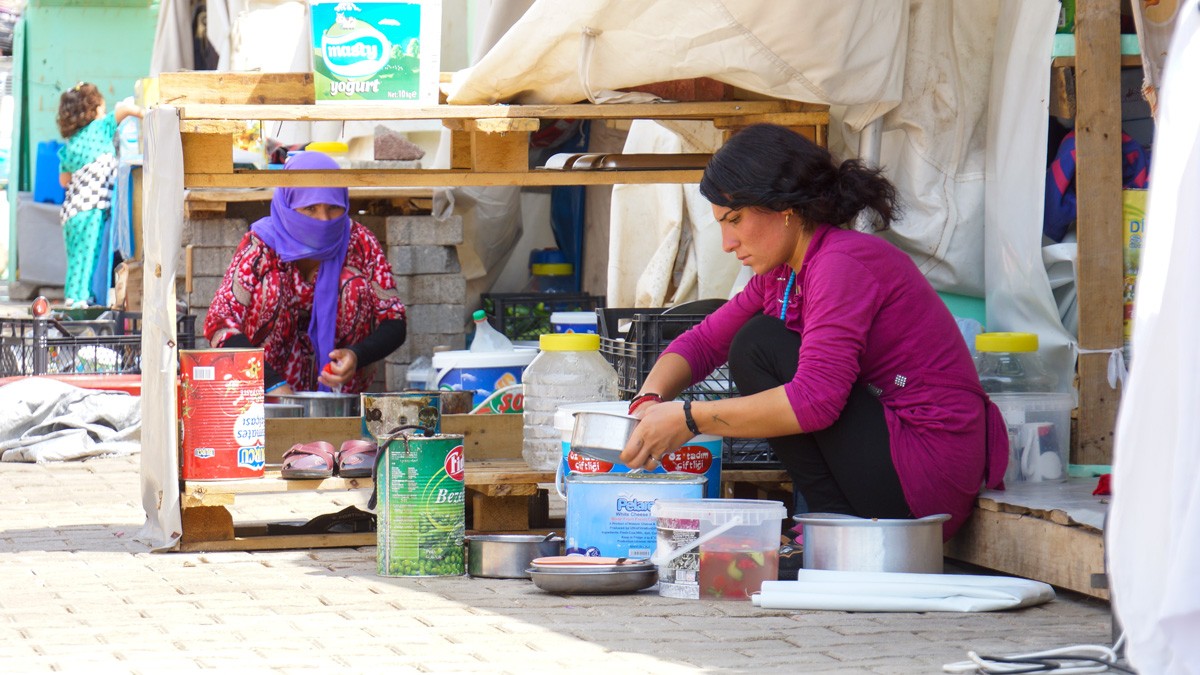Jesus at the Table
Mar 12, 2019
-SJ Holsteen
I stop by Jonathan House one evening and realize I’ve walked in on supper prep. Our two newest residents invite me to the meal. The third resident arrives home from work. He brings in a wall-hanging that he picked up at a restaurant that evening, a 2019 calendar with a picture of the Last Supper at the top. He wants to put it up on the kitchen wall before we sit down to eat. It’s like a prayer: Jesus with his disciples suddenly presiding over us. Hey, look - you’re there; we’re here. One table an echo of the other.
A resident presses a warm cup of sage tea into my hand. Another sets before me a plate of steaming curry ramen with dried hake and smoked crayfish. The third hands me a slice of bread to dip into a dish of yoghurt drenched in olive oil and za’atar. I can only receive.
The resident who put up the calendar wants to know, what’s the story behind that table picture? And why is Jesus always portrayed as a white European? Another resident mentions a movie where Jesus’ features are never seen, his figure simply emanates light. “Yeah, no one knows what he actually looked like,” another says. I point to my darker-skinned friends, “In reality, he probably looked like you.” “I like this very much, SJ,” one says.
Then the meal and conversation moves on. We discuss how we got our names and what they mean, cultural culinary differences, the weather, funny Youtube videos we’ve seen.
After dinner, someone circles back to Jesus and the current realities of the place where he lived. Nowadays, we note, he’d have to go through a military checkpoint just to get to Jerusalem to be crucified. What a hassle.
All together, we leap into wild speculation of how Jesus might subvert a checkpoint: “He could walk on top of the water…” “Yeah,” another says, “He’d walk on the river under the bridge where the soldiers are. He’d say, ‘If you want me, come and get me.’” “I think he’d stay at the checkpoint and keep it open so others could get through,” I say. “He’d tell the soldiers, ‘Uh, excuse me. I am the Way.’” Our eyes flash with the possibilities; we’re bent over with glee.
From artistic portrayals of the Last Supper to our own musings on Jesus at the checkpoint, all hint at the confounding premise of an Incarnate God. How could a human body contain the light of the world? How could the invisible God look like us? How could the Lord of the multiverse be both in the world and over it? All our imaginings fall short.
But our words and laughter also remind me of the joy and hope that can come when God enters into humanity. Like the residents at Jonathan House, Jesus’ own story includes displacement and homelessness. He understands life under oppressive regimes and Occupation. He knows in His flesh what it is to be persecuted and reviled. He, too, was falsely accused. And during his life on earth, the Incarnate God sat at a table with his disciples and inaugurated a new Feast, to remind them how His body would be broken for the redemption of all things.
In this moment, my asylum-seeking friends invite me to the table and back into the mystery of the Incarnation. They encourage me to expect Christ’s in-breaking into the familiar and the foreign, into beauty and brokenness, at those places that gather or divide us. And suddenly, supper at Jonathan House echoes with the hope of Emmanuel: Hey, look - you’re here, and I Am with you.
Other Featured Posts









